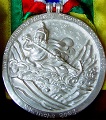 |
The Sir Edmund Hillary Mountain Legacy Medal |
 |
2013 Hillary Medalist: Dr. Harshwanti Bisht
All Medalists"During our [1984 Indian] Everest Expedition we saw how Sir Edmund Hillary has worked in that area. So that also inspired
us to work..."
(Indian mountain climber and ecologist Harshwanti Bisht, explaining her motivation to "Save Gangotri")
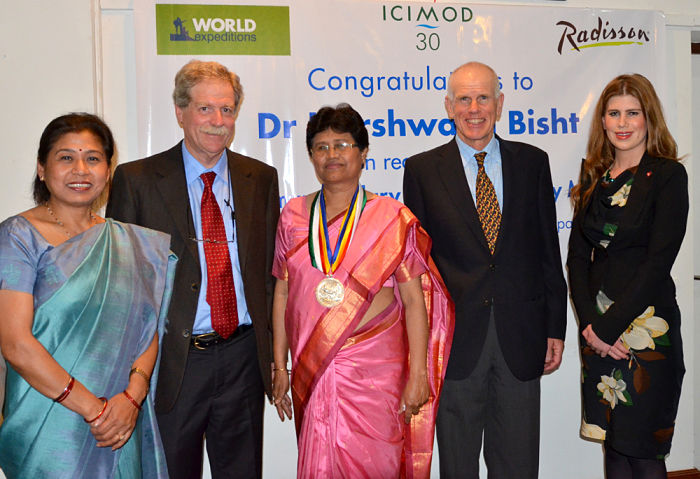
Uma Khakurel of Highland Excursions; Dr. David Molden, Director General of ICIMOD; Dr. Harshwanti Bisht; Peter Hillary; Amelia Hillary
Hillary Medal Sponsors


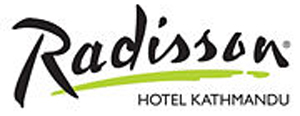


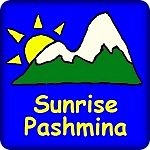
"Pashmina for the Fussy"

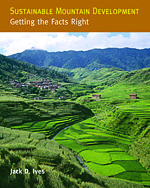
JD Ives monographs published by Himalayan Association for the Advancement of Science (HimAAS)
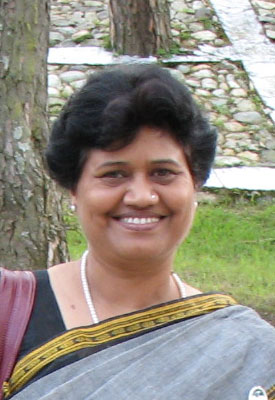
Media Coverage
- Jagran Josh August 18, 2013 Harshwanti Bisht selected for Sir Edmund Hillary Mountain Legacy Medal 2013
- Best blog for General Knowledge August 19, 2013 [Quiz on] General Knowledge and Current Affairs
- Rosemary Institute August 19, 2013 Harshwanti Bisht Selected for Sir Edmund Hillary Mountain Legacy Medal 2013
- Z News March 11, 2014 India's Harshwanti Bisht wins Hillary Mountain Legacy Medal
- News.nom.co March 11, 2014 India's Harshwanti Bisht wins Hillary Mountain Legacy Medal
- World News March 11, 2014 India's Harshwanti Bisht wins Hillary Mountain Legacy Medal
- News Track India March 11, 2014 India's Harshwanti Bisht wins Hillary Mountain Legacy Medal
- Topix March 11, 2014 Dr. Harshwanti Bisht, Indian mountaineer and conservationist, wins...
- Sun News March 11, 2014 India's Harshwanti Bisht wins Hillary Mountain Legacy Medal
- Montagna.tv March 11, 2014 Bisht wins Sir Edmund Hillary Mountain Legacy Medal Award
- News Track India March 11, 2014 India's Harshwanti Bisht wins Hillary Mountain Legacy Medal http://www.hindustantimes.com/india-news/indian-conservationist-to-be-awarded-edmund-hillary-medal/article1-1193747.aspx
- Hindustan Times March 3, 2014 Indian conservationist to be awarded Edmund Hillary Medal, by Utphal Parashar; March 11, 2014Indian conservationist to be awarded Edmund Hillary Medal, by Utphal Parashar
- Silo Breaker March 11, 2014 India's Harshwanti Bisht wins Hillary Mountain Legacy Medal
- India Jobs August 2013 Current Affairs – Awards August 2013
- ICT India August 2013 Current Affairs – Awards August 2013
- Latest Current Affairs August 18, 2013 Harshwanti Bisht selected for Sir Edmund Hillary Mountain Legacy Medal 2013
- The Pioneer March 13, 2014 Hillary Legacy Medal for Mountaineer with a Heart
- Yahoo! News India (Indo Asian News Service) March 11, 2014 India's Harshwanti Bisht wins Hillary Mountain Legacy Medal
- News Bharati (IANS) India's Harshwanti Bisht wins Hillary Mountain Legacy Medal
- Down to Earth (Athar Parvaiz) Mountaineer, ecologist and now champion of women's rights
- FU3GI March 2014 India's Harshwanti Bisht Wins Hillary Mountain Legacy Medal
- eKantipur March 18, 2014 Bisht gets Hillary conservation Medal
- Sify News March 11, 2014 India's Harshwanti Bisht wins Hillary Mountain Legacy Medal
- iNooz(Sify) March 11, 2014
- Veooz (Zee News) India's Harshwanti Bisht wins Hillary Mountain Legacy Medal
- Nepali Times Inspired-by-Hillary, by Athar Parvaiz
- Aaj Ki Khabar March 11, 2014 India's Harshwanti Bisht wins Hillary Mountain Legacy Medal
- HT Syndication March 18, 2014 Bisht gets Hillary conservation Medal
- Khan Study Group India My Notes by Dr. Khan - Awards August 2013
- Banker's Algo August 2013 News and Events August 23 2013 - August 25 2013
- One News Page (Zee News) March 11, 2014 India's Harshwanti Bisht wins Hillary Mountain Legacy Medal
- Geography and You March 13, 2014 India's Harshwanti Bisht wins Hillary Mountain Legacy Medal
- Sector Publishing Intelligence March 12, 2014 Dr. Harshwanti Bisht, Indian mountaineer and conservationist, wins Sir Edmund Hillary Mountain Legacy Medal
- Business Standard March 11, 2014 India's Harshwanti Bisht wins Hillary Mountain Legacy Medal [pdf]
- Summitclimb and Summittrek February 22, 2014 Hillary Medal Presentation
- Environmental News Network March 11, 2014 Dr. Harshwanti Bisht, Indian mountaineer and conservationist, wins Sir Edmund Hillary Mountain Legacy Medal [pdf]
- Republica February 25, 2014 Mountains of Hope!, by Athar Parvaiz; [pdf]
- Republica March 18, 2014 Hillary medal for Dehradun conservationist[pdf]
- Nepal Mountain News March 14, 2014 Bisht wins Sir Edmund Hillary Mountain Legacy Medal Award [pdf]
- South Asian Media Hillary medal for Dehradun conservationist
- Tribune India -- Dehradun Edition March 12, 2014 Harshvanti Bisht gets Hillary legacy medal
- Samachar March 11, 2014 India's Harshwanti Bisht wins Hillary Mountain Legacy Medal
- South China Morning Post - ASIA March 24, 2014 Women Climb Indian, Himalayan Peaks to Defy Stereotypes, by Bibek Bhandari
- Nepali Khabar Bharatiya Dr. Bishtko avardhaarana... [pdf]
- The Third Pole Women Climbers of the Himalayas [pdf]
- ICIMOD Web site April 13, 2014 Dr Harshwanti Bisht receives the Sir Edmund Hillary Mountain Legacy Medal 2014
- Geography and You March 11, 2014 India's Harshwanti Bisht wins Hillary Mountain Legacy Medal
- Rediff Realtime News March 11, 2014 India's Harshwanti Bisht wins Hillary Mountain Legacy Medal
- Rediff Realtime News March 11, 2014
- Inagist India's Harshwanti Bisht wins Hillary Mountain Legacy Medal
- The Greener Side March 16, 2014 Dr. Harshwanti Bisht, Indian mountaineer and conservationist, wins Sir Edmund Hillary Mountain Legacy Medal
August 12, 2013:
Professor of economics, and conservationist, and mountaineer Dr. Harshwanti Bisht has been selected to receive the Sir Edmund Hillary Mountain Legacy Medal. According to Dr. Beau Beza, Program Director in the School of Global, Urban and Social Studies at the Royal Melbourne Institute of Technology, the award is presented "for remarkable service in the conservation of culture and nature in mountainous regions. The medal both recognizes Sir Edmund Hillary's own service on behalf of mountain people and their environment and also encourages the continuing emulation of his example."
In 1981 Harshwanti Bisht, Rekha Sharma and Chandra Prabha Aitwal were the first three women to summit the main peak of Nanda Devi (7,816m). Bisht was also a member of the Indian expedition to Mt. Everest, in 1984. However, as Beza points out, the Hillary Medal is awarded for philanthropic achievements, not for sports achievements:
For 25 years, since 1989, Dr. Bisht has labored to improve conditions in the Gangotri area of Uttarakhand, at the headwaters of the Ganges in northern India. Her Save Gangotri project has planted tens of thousands of saplings, organized eco-awareness campaigns, propagated endangered medicinal herbs, and introduced ecotourism standards to an area that had been ravaged by climate change and unregulated pilgrimage.
Dr. Bisht, like other mountaineers, shifted her focus from recreation to conservation and sustainable high altitude tourism development as a direct result of the work of Sir Edmund Hillary:
When I was in Khumbu with the 1984 Indian Everest Expedition, I saw the great effect of Sir Edmund Hillary's work to conserve the natural environment and to bring economic opportunities to the Sherpa communities. So that inspired me to work in Gangotri, which is one of the holiest pilgrimage sites but faces many great challenges, both in protecting the environment and in serving the needs of the various stakeholders.
Bisht has had remarkable success in restoring the birch forests around Gau Mukh (Cow Snout), the terminal area of Gangotri Glacier, ravaged by the double-whammy of unmanaged pilgrimage and mass-market tourism as well as climatic change. As the forests take hold, they have an increasingly significant impact in increasing humidity and lowering local temperatures. According to Kumar Mainali, president of Mountain Legacy and editor of Himalayan Journal of Sciences, this labor-intensive approach is an extremely positive development:
Dr. Bisht's great contribution needs to be seen in the context of the Chipko Andolan, the movement of village women who used place their bodies in the path of large-scale commercial timber operations in an effort to empower, or recover the power, of local forest managers. That grassroots movement inspired similar actions around India, and had a significant impact in slowing the rate of deforestation. Dr. Bisht's plantations are located in Uttarkashi district, adjacent to Chamoli, epicenter of the Chipko movement. Like the Chipko heroes, Dr. Bisht is showing that the action of a committed woman can make a difference against forces that seem irresistible. In this case, Dr. Bisht and her colleagues are reforesting the ancient birch stands alongside Gangotri glacier, creating a slightly cooler microclimate that Dr. Bisht hopes will slow the glacier's recession. Like all new grassroots efforts, it sounds quixotic, but it is not. If we don't pitch in and help, our loss will be incalculable.
Ecotourism: key to integrated mountain development
in the Indian Garhwal
In 1994, Dr. Bisht published a monograph entitled Tourism in Garhwal Himalaya: With Special Reference to Mountaineering & Trekking in Uttarkashi and Chamoli Districts. This study is a blueprint for integrated mountain development, embracing a full panoply of opportunities, objectives, challenges, and action proposals.
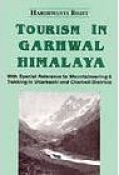
One of the key findings of Dr. Bisht's study is that there is a convergence between pilgrimage and adventure tourism, in terms of destinations as well as amenity requirements. Her chapter on "Elements of Adventure Tourism" begins with the point that mountains are sacred because they possess beauty and they inspire mankind to meditate and grow spiritually; for that reason, to the Indian mind Himalaya and holiness are inseparable. More important, she finds not only that adventure tourists are increasingly pursuing goals similar to those of traditional pilgrims, but also that a large proportion of self-identified pilgrims actually share the values of secular tourists. Travel for them is not intentionally painful, and self-abnegation does not apply to infrastructure, waste management, or safety. The old model of pilgrimage (more the toil, higher the religious attainment and salvation) no longer holds good in general, Bisht observes. People demand comforts during their pilgrimage.
Sue Badyari, CEO of World Expeditions, a leader in responsible travel and a major supporter of the Hillary Medal, commented on the selection of Dr. Bisht as recipient of the 2013 Hillary Medal:
We at World Expeditions are delighted to see Dr. Harshwanti Bisht receive this award. We have long admired her work in rehabilitating the Gau Mukh ecosystem and in promoting responsible practices among visitors, hosts, and policy makers. Dr. Bisht's idea of creating a network of women's mountaineering clubs is both audacious and clearly needed. These young climbers will go on to take jobs, launch companies, serve in government agencies, and raise families, where they will spread their commitment to mountain recreation, conservation, and empowerment of local communities. World Expeditions has a long tradition of partnering with indigenous groups promoting responsible travel, and we look forward to collaborating with Dr. Bisht.
Mountain Power!
Dr. Bisht is currently embarking on a new project, in collaboration with Mountain Legacy. Mountain Power will be a network of women's mountaineering clubs affiliated with colleges and universities throughout the Himalayan region, and eventually worldwide. The goals of the project are summarized in the mission statement:
A 'sport for development and peace' program, building transboundary highland-lowland cooperation among women for challenging recreation, responsible tourism, health, entrepreneurial leadership, and sustainable stewardship of the natural and cultural legacy of mountains.
The central rationale, which is also the theme of the United Nations' Sport for Development and Peace program, is that sports are useful for the development of the individual, for interpersonal relations, and for larger social constructs. Sports opportunities for women have lagged far behind those for men, particularly in developing regions, depriving women of recreation, physical challenges, and leadership training. Mountain Power clubs would not only provide girls and young women experience in sports such as climbing, trekking, skiing, and rafting, but would also foment interest in conserving nature, protecting cultural sites, and developing economic opportunities in remote communities. The implementation of an international network of such clubs would allow for safe and economical exchange excursions by individuals or teams, as well as collaborative projects bringing together clubs from many schools.
Empowerment of women is vital to our region, especially in poor mountain communities, says Dr. Bisht. Women need the confidence and the skills to become entrepreneurs, leaders, and policy makers. As mountaineers, they will combine sports with practical work in recreation planning and economic development. They will undertake projects of their own choosing, whether waste management, or afforestation, or trail improvement, or infrastructure design, or whatever seems useful, always mindful of the objectives of gender equity and responsible stewardship.
Dr. Bisht will be announcing an organizational meeting for those interested in launching Mountain Power clubs in their own schools, and she will also conduct a training program for club supervisors, time and place to be announced. For more information, see the Web site www.MountainPower.org or contact Dr. Bisht at bisht@mountainpower.org.
The Sir Edmund Hillary Mountain Legacy Medal will be presented to Dr. Harshwanti Bisht in Kathmandu, Nepal, in March 2014. Peter Hillary, who will be presenting the award, commented that
Sixty years after my father and Tenzing Norgay climbed Mt Everest this recipient of the Hillary Medal will close the circle. For years Dad's example challenged other mountaineers to 'give back' to the communities who helped them in their mountaineering endeavours and to help preserve the mountain environment. A few have heeded the call, and among them is Dr. Harshwanti Bisht. She has undertaken mountain conservation projects and actively encouraged young mountaineers to contribute to the needs of mountain communities. I think my father would be pleased.
More Information
For more information about Dr. Bisht's work in Gangotri, visit SaveGangotri.org.
For more information about MountainPower, visit MountainPower.org.
Dr. Bisht speaks about the results of her replicate photography study of the Gangotri glacier